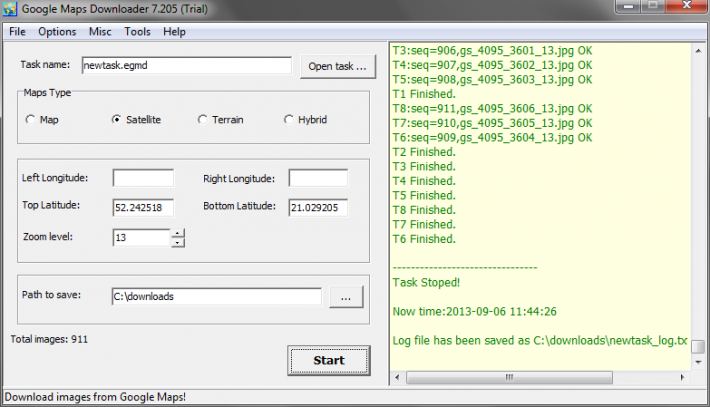Crack C Map Charts Free
The 15th Amendment prohibits any state (or the federal government) from denying citizens the right to vote based on 'race, color, or previous condition of servitude.' But it took the Voting Rights Act, signed on August 6, 1965, by President Lyndon B. Johnson, to make the right to vote real for African Americans in the South.
The Voting Rights Act changed the course of American politics in the 20th century. While it's been bipartisan for most of its history, how you feel about the Voting Rights Act today is a test of how you feel about American race relations: Have we come far enough since the civil rights era that civil rights–era laws are outdated, or is the right to vote still fragile enough that it needs federal law to protect it? The Supreme Court, when it struck down a key section of the VRA in 2013, signaled that it thinks the Voting Rights Act is a relic of a more intolerant past. But the history of the law makes it clear that, in fact, the question that made the VRA necessary still isn't settled: What happens when an ostensibly colorblind law ends up disproportionately disenfranchising people of color? In the late 19th and early 20th century, Southern states seeking to keep out black voters had a few tools at their disposal.
This map shows the spread of 'poll taxes,' fees that all citizens had to pay in order to vote — and as it just so happened, the citizens who couldn't afford to pay poll taxes were disproportionately black. Other restrictions included (which often involved arcane trivia or confusing wording) disproportionately administered to black citizens. To keep these restrictions from ensnaring poor whites, as well, there was the — if your grandfather had been registered to vote, you were in the clear. Image credit: via Wikimedia Commons (licensed via Creative Commons). And if laws didn't work, there was always racial terrorism. During Reconstruction, when the federal government was occupying the South after the Civil War, lynchings were the primary way some white Southerners tried to dissuade black Americans, and white Republicans, from voting. This chart of lynchings reported to the Freedmen's Bureau from 1866 to 1868 shows that lynchings weren't used just to scare black people; they were used to scare black people away from the polls.
Image credit: Christophe Haubursin/Vox. In 1965, only 2 percent of African Americans in Selma, Alabama, were registered to vote (despite repeated voter registration campaigns). The Southern Christian Leadership Conference (SCLC), the Student Nonviolent Coordinating Committee (SNCC), and the Dallas County Voters League (DCVL) decided to lead a march from Selma to Montgomery, the state capital, to draw attention to the need for national voting rights legislation. You know what happened next.
The first attempt — the 'Bloody Sunday' march — ended with law enforcement officers savagely beating demonstrators as they crossed the Edmund Pettus Bridge (which you can see in the top left of the map, by the bend in the Alabama River). It took a federal judge and the use of federal troops by President Johnson to protect the marchers and allow them to complete the march successfully on March 25. Image credit.

If it's surprising to you that the Voting Rights Act split Democratic senators but had fairly unified support from Republican ones, check out on how the Democrats went from the party of segregation to the party of Obama. But what's interesting about the Senate vote to pass the VRA is the Republican 'no' votes, which foreshadowed the Republican takeover of the white Southern vote. One vote was from was Strom Thurmond, who'd become a Republican in 1964 because he was mad at his party for passing the Civil Rights Act. The other was a 40-year-old Texan named John Tower, who in 1960 had become the first Republican senator from the state since Reconstruction. Image credit. As white Southerners were shifting from a Democratic bloc to a Republican one, black voters were consolidating around the Democratic Party.
C-map Max
Both of these shifts were reactions to the civil rights actions of the Johnson administration, though neither was spurred by the VRA itself — they probably would have happened even if Johnson had stopped with the Civil Rights Act of 1964. But without the VRA, they wouldn't have had nearly as much impact. An overwhelmingly Democratic voting bloc that is, in much of the country, systematically kept from turning out to vote isn't much of a voting bloc.
Image credit: Akiim DeShay/. Under the VRA, the federal government can bring a suit anywhere in the country against voter restrictions. But some places had to ask permission to change laws — otherwise known as preclearance — rather than begging forgiveness. This map shows the jurisdictions that needed preclearance as of 2008. In 2013, in the case Shelby County v. Holder, the Supreme Court struck down the VRA's formula for determining which jurisdictions needed preclearance. The majority, led by Chief Justice John Roberts, argued that the formula was a legacy of the 1960s and was no longer relevant.
C Map Charts Free

The decision didn't ban preclearance entirely. It just required Congress to set up a new formula. But given how dysfunctional Congress is, it's hard to imagine how that would happen.
Image credit: Department of Justice.